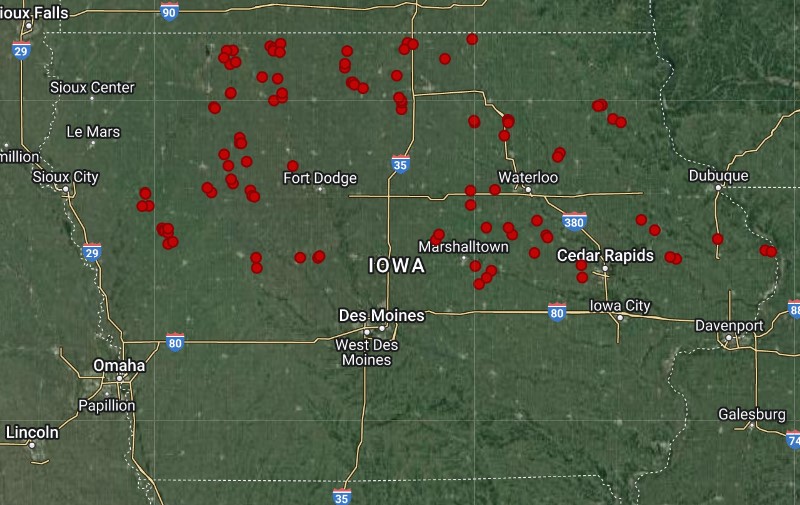
(Photo: Iowa Soybean Association)
Dry conditions continue to be a top concern
July 27, 2023 | Kriss Nelson
According to Iowa Soybean Association (ISA) research agronomists, the hot and dry conditions are the biggest struggle facing Iowa soybean farmers as we approach the last few months of the 2023 growing season.
The drought monitor released July 27 shows the majority of the state is in a moderate drought with some areas of western and southeast Iowa categorized under extreme drought conditions.
“Most of the farmers I have been visiting within northeast Iowa tell me they are experiencing tougher conditions than this time last year in terms of soil moisture,” says ISA Research Agronomist Alex Schaffer.
Although there has been some rainfall in northwest Iowa, conditions remain dry.
“Subsoil moisture has improved some, but we are just getting by with below-normal subsoil moisture,” says Scott Nelson, ISA research agronomist.
Soybeans, Schaffer says, are reaching the R2 to R3 stages, and corn is mainly in the R1 to R2 stage of development.
Weeds and pests
Pending any late-season weed escapes, soybean farmers have successfully controlled weeds.
“Surprisingly, weed control has been good given the dry weather that can reduce efficacy of soil-applied herbicides,” says Nelson.
The crisis of the year, according to Nelson, is corn rootworm. This is happening in various crop rotations, he says.
“We are seeing western corn rootworm in corn grown after corn along with northern corn rootworm in corn after corn and corn after soybeans,” he says. “These pests are causing lodging from the corn rootworm feeding.”

ISA’s corn rootworm monitoring project is in full swing. Shown above are this year’s rootworm survey locations.
“We are seeing more beetles in corn after soybeans than we would like,” says Schaffer.
Schaffer notes that if you see over two beetles per trap daily, you may want to carefully consider what corn seed traits you use next year.
Other pests that farmers should scout for include soybean aphids, soybean gall midge and spider mites.
Diseases
Disease pressure in soybeans and corn seems low this year – most likely because of the hot, dry conditions.
Schaffer has heard of reports of tar spot affecting corn. Tar spot is a fungal disease in corn that infects the leaves. Symptoms include irregularly shaped black spots on the leaves.
Nelson says there have been signs of Cercospora leaf blight, also known as purple seed stain disease, in the eastern part of northwest Iowa. This fungus affects both the soybean leaves and seed.
Fungicide trials
ISA fungicide trials are beginning. In the research, drone-applied fungicides of Lucento, Miravis Neo and Veltyma will be tested against untreated areas.
Twelve sites are being targeted for the trials throughout the state.
To learn more about ISA’s Research Center for Farming Innovation research trials and to contact a research or conservation agronomist, click
here.
Back